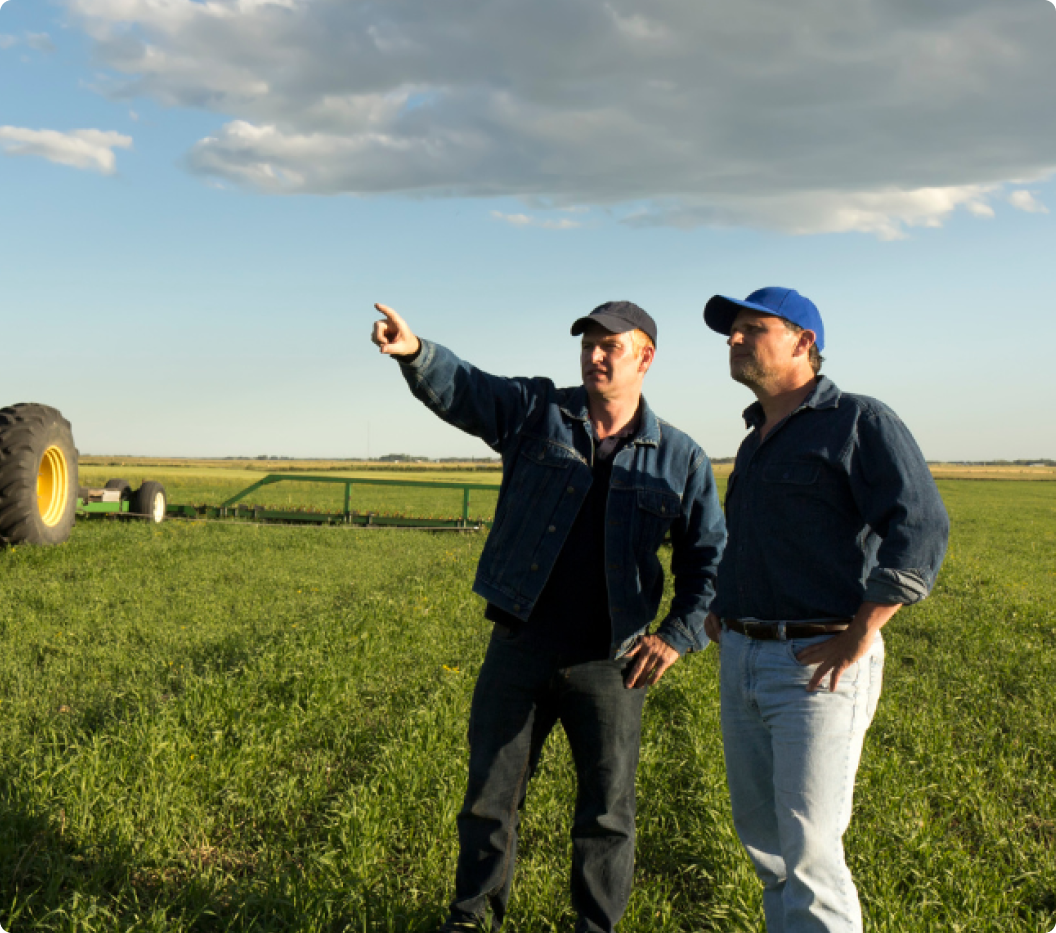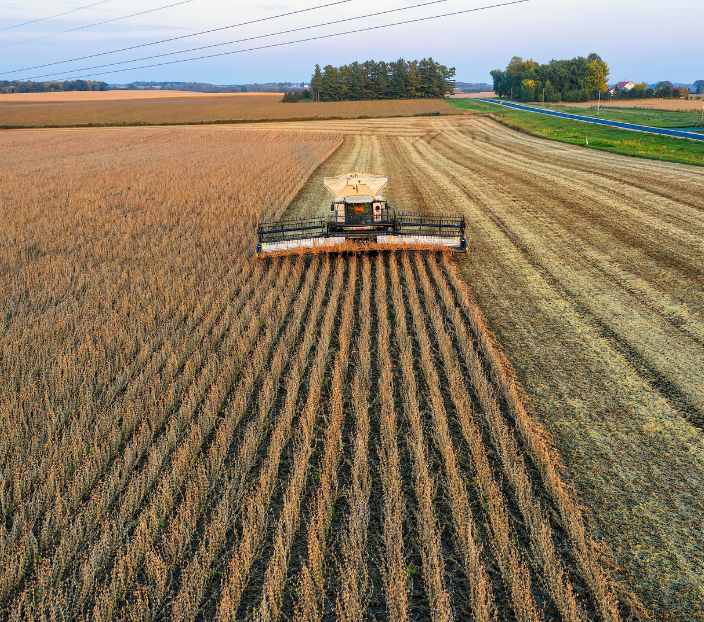
April 2025
Value chain financing mechanisms for the food and agriculture sector
Despite the urgent need to address climate change – and the long-term benefits of doing so – the significant upfront investment required to decarbonize value chains remains one of the main barriers to adopting more sustainable practices. The food and agriculture sector is responsible for around one-third of global greenhouse gas emissions, the majority taking place along the value chain. However, the sector has historically received a disproportionately small share of climate finance. This finance gap continues to hinder the sector’s ability to meet global climate targets and build resilient value chains in the face of the changing climate.
To drive Scope 3 action at the necessary scale and speed, substantial value chain financing from a diverse set of actors is required. Fortunately, a growing suite of both innovative and traditional financing mechanisms is available to tackle the challenge of value chain decarbonization.
This blog is the final part of our series on accelerating finance and collaboration for value chain decarbonization. Below, we explore four key financing mechanisms – corporate finance, investment funds, banks and public finance – each offering distinct opportunities and challenges for scaling interventions across food and agriculture value chains.
The cost of decarbonization
Currently, less than 5% of total global climate finance is directed toward the food and agriculture sector. The estimated finance gap ranges from hundreds of billions of dollars to above one trillion dollars annually, and political and economic uncertainty is threatening to widen it further.
Delaying investment only increases future costs as climate impacts intensify over time. Yet, the benefits of decarbonization go far beyond climate mitigation. Increasing value chain financing could yield up to $10 trillion annually in wider benefits, through the eradication of undernutrition, reduced diet-related chronic diseases, biodiversity restoration, and better incomes for farm workers.
Value chain financing mechanisms
Collaboration across the value chain is essential to finance farm-level interventions. Farmers often receive a small portion of the total profit from the sector and require support from other actors to be able to invest in interventions on their farms. Emerging value chain financing models aim to distribute costs and risks more evenly, incentivizing downstream food and agriculture companies to co-invest in interventions to reduce emissions.
Each financing mechanism is defined by its source and structure and can be assessed on factors such as risk/reward, scalability, and suitability to specific commodities or value chains. A blended approach that leverages all four financing types will be necessary to close the gap and achieve meaningful impact.
Corporate finance
Downstream corporations have a leading role to play in financing interventions – typically, they have Scope 3 targets to meet and higher profit margins than actors upstream in the value chain.
Corporate financing instruments include:
- Price premiums for low carbon commodities
- Price per impact
- Direct investments in on-farm projects
- Investments in Beyond Value Chain Mitigation (BVCM) in the sourcing landscape.
Companies with established relationships with farms may use price premiums, which involve paying a higher price for a low-carbon commodity, to directly support low-emission production. This leverages the traditional buyer and seller relationships and allows for relatively direct financial support for on-farm interventions.
Alternatively, a company can pay a set price per impact on a low-GHG product. This involves an intervention’s impact being quantified, verified and allocated to all contributing partners across the value chain. Third-party assurance can add credibility to transferred attributes, such as through Impact Units, developed by SustainCERT. Impact Units are unitized, verified greenhouse gas (GHG) outcomes from value chain interventions. They enable companies to co-invest in interventions in their value chains by enabling transferring and co-claiming the resulting carbon reductions or removals in Scope 3 reporting.
Establishing climate programs can help identify the most appropriate and impactful instruments to meet sustainability goals, while mobilizing procurement budgets enables financing interventions beyond pilot programs.
Investment funds
Although the food and agriculture sector has traditionally attracted little investor attention – just 1.5% of their investments in Europe – this is changing. Investors are increasingly aware of the financial risks posed by environmental degradation and the impacts on their portfolios as well as new opportunities they bring. In addition to providing direct finance, investment funds are critical players in helping manage risk through their carefully planned investment strategies.
Investors can support decarbonization through:
- Equity financing
- Debt financing
Buying equity in companies focused on decarbonizing the food and agriculture sector provides these disruptors with a valuable source of capital and enables innovation. Some asset managers are curating dedicated funds for investment in sustainable food, such as Mirova’s Future of Food Fund. Debt financing, meanwhile, is well-suited to support tried-and-tested interventions which have passed their pilot phase and are ready to scale up. This can create a virtuous cycle in which investors, suppliers, and buyers all reap the benefits.
Bank financing
Like investors, banks have historically played a limited role in financing sustainability projects in the food and agriculture sector, often due to limited sector expertise and challenges in assessing financial risks tied to regenerative practices. However, this is changing as banks are increasingly considering sustainability alongside risk and return when assessing which projects to support.
Some banks like Rabobank now offer incentivized loans based on the farm's sustainability ratings, while others provide green loans for projects with measurable environmental benefits.
Banks can play a key role in value chain financing, offering advantages to both offtakers and suppliers. They can give downstream companies more time to pay their suppliers, improving cash flows and giving actors across the value chain early access to working capital – a potentially impactful advantage given the speed with which interventions must be introduced.
Public subsidies
Governments have a critical role in providing financial support for value chain interventions and aligning the food and agriculture sector with national emissions reduction targets. In the EU, for instance, bloc-wide public sector funding decisions have a significant influence on how land is managed. In some countries such as France, public subsidies remain the primary source of agriculture finance.
Evidence suggests that reforming agricultural subsidies based on sustainability objectives, including GHG reductions, is economically feasible and can contribute to more sustainable food systems. Policymakers can support the decarbonization of the food and agriculture sector by:
- Reforming existing agricultural subsidies to remove “perverse incentives” that encourage unsustainable agricultural practices such as monocultures and input overuse.
- Linking subsidies to verified climate outcomes, known as results-based financing.
- Launching targeted programs to implement sustainable practices, such as schemes from the EU and the UK aimed at incentivizing sustainable land management and food production.
These approaches can help mobilize public capital toward more resilient and climate-aligned food systems.
Bridging the gap on value chain financing
Across the board, there is growing interest in increasing investment in the decarbonization of the food and agriculture sector – from corporations to investors to public institutions. This momentum is driven by the urgency of meeting climate targets, stakeholder and customer pressure, and the realization that sustainable practices can unlock cost savings and increase value chain resilience in the long term.
However, to close this trillion-dollar gap and achieve global climate goals, the sector must act quickly. Only through coordinated, cross-sectorial finance and collaboration can we secure a sustainable, low-carbon future for food production.
To learn more about scaling sustainable solutions, check out the previous instalments of this blog series on the finance gap and the role of collaboration, and download our full report on unlocking value chain financing to decarbonize the food and agriculture sector.

